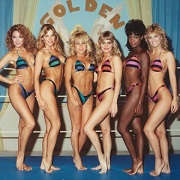|
I love that somehow, this thread has managed to imply that the American War of Independence was fought by shithead racists who just wanted to stomp on brown people, thereby making Imperial Britain the good guys in the war. gently caress yeah spin, we rock at it.
|
|
|
|

|
| # ? May 27, 2024 21:04 |
|
Arquinsiel posted:I love that somehow, this thread has managed to imply that the American War of Independence was fought by shithead racists who just wanted to stomp on brown people, thereby making Imperial Britain the good guys in the war. 
|
|
|
|

|
|
|
|

|
|
|
|
Arquinsiel posted:I love that somehow, this thread has managed to imply that the American War of Independence was fought by shithead racists who just wanted to stomp on brown people, thereby making Imperial Britain the good guys in the war. Nobody was even talking about the American War of Independence. And not that it makes Britain the good guy, but that definitely was one of the causes of the American Revolution, so 
|
|
|
|
Arquinsiel posted:I love that somehow, this thread has managed to imply that the American War of Independence was fought by shithead racists who just wanted to stomp on brown people, thereby making Imperial Britain the good guys in the war. Wellllll..... Funny that you should say that....
|
|
|
|
PittTheElder posted:Nobody was even talking about the American War of Independence.
|
|
|
|
Arquinsiel posted:I love that somehow, this thread has managed to imply that the American War of Independence was fought by shithead racists who just wanted to stomp on brown people, thereby making Imperial Britain the good guys in the war. Well, if you're pro-native Americans, the British were the ones to root for, since they were the ones who didn't have as much motivation to immediately steal land from them. Of course, if you really want to make a moral judgement on these people who lived 200+ years ago, you'll have to weigh that against the whole refusing to give the colonists representation in parliament and the taxes/regulations. Of course, racism is an issue that still has a lot of social pull these days, while all of the taxes and regulations the colonists faced are long dead, so they'll naturally seem a lot more petty in retrospect.
|
|
|
|
I blame Georgia for the fact that we don't have a Cherokee state in the Union.
|
|
|
|
SlothfulCobra posted:Well, if you're pro-native Americans, the British were the ones to root for, since they were the ones who didn't have as much motivation to immediately steal land from them. Everyone knows the British had a long and distinguished history of respecting aboriginal rights wherever they ruled. No way would they have swept the Natives Americans off their lands if the US had remained a British colony.
|
|
|
|
Arbite posted:The Americans would have very gladly gobbled up British North America in that war just like they tried to do in the War of Independence. The fact Britain was in the third decade of war against the man who controlled most of Europe just gave them the best chance to do it. Impressment as a general principle did not apply as foreigners were exempt. Two practical points that are often confused with impressment of Americans are; 1. American born sailors who were part of the crew of a British privateer (a very popular and very lucrative undertaking - and one that was completely optional) could be taken into the crew of a regular Royal Navy warship if needed. British Letters of marque extended special privileges to the named master of a ship, not to the crew. If taken onto a warship these men were NOT pressed as they had already volunteered to serve the Crown at sea to which they could not attach conditions (such as remaining on specific ship). However much they might have thought this unfair itís what made them not pirates! 2. Any British subject (born inside British jurisdiction) was able to be pressed if not specially exempted, and is likely why a large of number of sailors signing onto to American ships declined to record their place of birth in the books. Doing so was essential draft dodging and Britain was entirely justified in acting to prevent this. It isnít particular noteworthy as today renouncing citizenship of most nations can not be done unilateral and often specifically excludes the freeing of military obligations.
|
|
|
|
Arquinsiel posted:There's a difference? I've been using the two interchangeably for years now The conversation was originally about the War of 1812 and then shifted to the American War of Independence tangentially because both wars were provoked, in part, by the British trying to prevent the westward expansion of the colonies/United States into native territory.
|
|
|
|
Arquinsiel posted:There's a difference? I've been using the two interchangeably for years now War of Independence and American Revolution are the same thing. Probably not a wise move on my part mixing them. But what you were originally responding to war War of 1812 chat. e: Upon closer inspection, people were talking about the War of Independence too. I'm just way off base here, my bad.
|
|
|
|
And just because one side is "bad" or has suspect motives, doesn't mean the other side is automatically"good".
|
|
|
|
e: ablearcher beat me to it with a better answer
|
|
|
|
The best bit about the early history of camouflage is how it was driven by a specially-consituted crack unit of artists and painters who'd all been called up and were then pulled back out of their regiments to spend the war furiously painting for France.
|
|
|
|
Trin Tragula posted:The best bit about the early history of camouflage is how it was driven by a specially-consituted crack unit of artists and painters who'd all been called up and were then pulled back out of their regiments to spend the war furiously painting for France.
|
|
|
sullat posted:And just because one side is "bad" or has suspect motives, doesn't mean the other side is automatically"good". The Americans were revolting for what today would be considered entirely good reasons (lack of representation and devolved power to the Thirteen Colonies). The fact that the tax being placed on them was much less than their Old World brethren and entirely to pay for their own defense, and one of the things the Americans' wanted the power to do was continuously expand westwards into the natives, just provides some awkward details of what they did with their newfound power. Besides, it is that surprising that different countries present their histories to their people in different ways? America spends a lot of time mythologising the American Revolution, while Britain barely touches it in its history education. Canada presents the War of 1812 as a great victory over American invaders, while America's either ignore it or treat it as a respond to perceived British injustice.
|
|
|
|
|
HEY GAL posted:why are the french so loving french Because they are French, bien sŻr.
|
|
|
|
HEY GAL posted:why are the french so loving french Someone has to be. 
|
|
|
|
AbleArcher posted:Impressment as a general principle did not apply as foreigners were exempt. Two practical points that are often confused with impressment of Americans are; Of course, one of the reasons impressment became an issue was the British took it to the length of attacking and boarding the Chesapeake, a U.S. Navy vessel, in search of several deserters. Boarding US ships looking for people is one thing (and to be fair a lot of Brits did jump to US vessels to avoid service) but outright attacking a military ship to take people off is just a bit provocative to put it mildly. Not to claim the U.S. was some innocent victim in the whole mess of course. If I had to sum up the cause of the war in short form it'd be "United States got greedy for British territory mixed in with a feeling the U.S. was being 'dissed' by the British (which given the British "diplomacy" shown had something of a point); British were busy fighting Napoleon and doing anything they could to that end, and had no time to spare for a bunch of former colonials having a 'snit' about how they were doing it (especially since said colonials were selling to the French as part of their neutrality)". It was stupid and avoidable if either side had tried to (though in fairness the U.S. was being the stupider of the two), and ended in a stalemate/arguable United States loss because the greedy bits of the U.S. had no way to conquer the bits they wanted and the British didn't really care enough about anything beyond "stop shooting us/invading Canada" to push past the resistance the U.S. put up.
|
|
|
|
Trin Tragula posted:The best bit about the early history of camouflage is how it was driven by a specially-consituted crack unit of artists and painters who'd all been called up and were then pulled back out of their regiments to spend the war furiously painting for France. Why has no one made a movie of this yet.
|
|
|
|
Did I make up the thing where the Italians had a machine gun that was fed by a god drat hopper of all things? My google-fu is failing me and I'm starting to think I'm crazy.
|
|
|
|
Xiahou Dun posted:Did I make up the thing where the Italians had a machine gun that was fed by a god drat hopper of all things? You're not crazy, but I can't remember the name either.
|
|
|
|
Pretty sure the hopper fed by stripper clips was the Japanese Type 11. Funny that their light machine gun could be fed from clips with the magazine attached while their main heavy autocannon couldn't. The Italians just had the Breda 30, which fed a fixed magazine from stripper clips (somehow even worse!) and greased each bullet individually. It also basically couldn't have its barrel changed, and a damaged magazine could render the gun unusable. The Japanese also got into the individually oiling cartridges game with the Type 96 before getting something that seems decent in the Type 99.
|
|
|
|
Deteriorata posted:Everyone knows the British had a long and distinguished history of respecting aboriginal rights wherever they ruled. No way would they have swept the Natives Americans off their lands if the US had remained a British colony. Agreed, there was no continuity between the British and the American settlers, English-speaking Anglo-Saxons sprung forth fully formed like Athena from Zeus' skull.
|
|
|
|
xthetenth posted:Pretty sure the hopper fed by stripper clips was the Japanese Type 11. Funny that their light machine gun could be fed from clips with the magazine attached while their main heavy autocannon couldn't. Really? When PTRD designers proposed that infantrymen grease individual cartridges to improve extraction rates, the infantrymen responded with a counterproposal that the designers should go gently caress themselves.
|
|
|
|
Ensign Expendable posted:Really? When PTRD designers proposed that infantrymen grease individual cartridges to improve extraction rates, the infantrymen responded with a counterproposal that the designers should go gently caress themselves. In the Japanese and Italian cases it seems like they added a pump of some sort to do this, so it was dirt or sand that made the counterproposal.
|
|
|
|
What kind of orders were given to Mid rank Soviet Commanders in the second world war? Like anyone who commanded anything from 100 to 10000 troops. Were they told "Go to this town and capture it!" or was there more specific/vague orders involved? I have only really read about the big picture stuff of Rokossovsky outsmarting the Evil Nazi's and stabbing their commanders with his magic sword of intelligence and organization but I haven't read poo poo about how it was for the average Colonel figuring out what they were supposed to be doing in a clusterfuck like Kursk or Stalingrad. Getting my head around the logistics of it all is a loving challenge. I have heard an anecdote of a soviet Captain(?) being ordered to get his company across a river with no boats or rafts or anything so he orders them to swim, they can't swim so he tell them if they don't he'll shoot them. 4 hours later he and about 10 of his men are on the other side of the river the other ninety or so have drowned, been shot, or somehow deserted. Then a slightly larger unit shows up with a bunch of pontoon boats. I also wanted to know if this was true or some kind of anti soviet propaganda. Also to continue the tanktalk: Based on what I've read (almost entirely from this thread). It seems like there is no tank that would ever be worth 2 of its enemy counterpart indicating that having more tanks of slightly lower quality would almost always be better than less tanks of higher quality.
|
|
|
|
Marxism posted:What kind of orders were given to Mid rank Soviet Commanders in the second world war? Like anyone who commanded anything from 100 to 10000 troops. Were they told "Go to this town and capture it!" or was there more specific/vague orders involved? I have only really read about the big picture stuff of Rokossovsky outsmarting the Evil Nazi's and stabbing their commanders with his magic sword of intelligence and organization but I haven't read poo poo about how it was for the average Colonel figuring out what they were supposed to be doing in a clusterfuck like Kursk or Stalingrad. Getting my head around the logistics of it all is a loving challenge. I usually deal with tank/tank platoon commanders, and their orders are typically "go to place, meet with infantry, attack this different place and hold until the rest of the group shows up". Company and regimental commanders get vaguer orders like to take or defend a certain line, and then the issue orders for assembly areas and such. As for specifically crossing the river without engineers (where are the engineers, by the way?) you'd get the soldiers to make flotation devices out of some improvised materials. Even infantry companies have light mortars and heavy machineguns with them, and good luck getting that poo poo across the river without a raft. As for tanks there's a ton of mathematical battlefield modelling formulas, but from what I've read that in order to beat two units, one unit needs to have a square of the combat effectiveness. Three units, cubed combat effectiveness, and so on. Plus, a tank that's there is better than a tank that's not. If you have 10 tanks and your enemy has one super-tank, you can just go around it and wreck all his supply lines and headquarters and whatnot, and his supertank becomes useless. Ensign Expendable fucked around with this message at 05:13 on Jul 18, 2015 |
|
|
|
Ensign Expendable posted:As for tanks there's a ton of mathematical battlefield modelling formulas, but from what I've read that in order to beat two units, one unit needs to have a square of the combat effectiveness. Three units, cubed combat effectiveness, and so on. Plus, a tank that's there is better than a tank that's not. If you have 10 tanks and your enemy has one super-tank, you can just go around it and wreck all his supply lines and headquarters and whatnot, and his supertank becomes useless.
|
|
|
|
Marxism posted:Also to continue the tanktalk: Based on what I've read (almost entirely from this thread). It seems like there is no tank that would ever be worth 2 of its enemy counterpart indicating that having more tanks of slightly lower quality would almost always be better than less tanks of higher quality.
|
|
|
|
Presumably the problem with making tons and tons of lovely tanks is that a lovely tank still needs a full, trained crew? That will become your limiting factor after a while, especially if your lovely tanks keep blowing up and taking all your experienced crew with them.
|
|
|
|
it seems like a lot of firearms and other military equipment from asia uses the word "type" to designate different versions of stuff while in the west it seems to be more "model." Is there a reason for this or is it just a translation thing or what?
|
|
|
|
Kanine posted:it seems like a lot of firearms and other military equipment from asia uses the word "type" to designate different versions of stuff while in the west it seems to be more "model." Is there a reason for this or is it just a translation thing or what? It's just a translation thing. The Soviets use "Object" quite a lot. Other filler words include "Mark", or "Pattern".
|
|
|
|
Slim Jim Pickens posted:It's just a translation thing. The Soviets use "Object" quite a lot. Other filler words include "Mark", or "Pattern". Yeah, the Forgotten Weapons guy has referred to Japanese rifles using Pattern or Model as often as he uses type, the terms seem pretty much interchangeable.
|
|
|
xthetenth posted:Pretty sure the hopper fed by stripper clips was the Japanese Type 11. Funny that their light machine gun could be fed from clips with the magazine attached while their main heavy autocannon couldn't. Lemme make an effortpost on the Japanese and Italian machine guns, because hoo boy were they nuts. The first Italian machine gun everyone knows is the Breda Modello 30 light machine gun. It was closest to the American BAR in design and intent, being a magazine-fed gun firing full size rifle rounds (well, sort of; the Italians and Japanese kept using less powerful 6.5mm ammo for the majority of the war and made incomplete and stilted attempts to change over to larger ones during the conflict) and using a bipod. But unlike the Americans, the Italians didn't trust their soldiers not to lose their magazines in combat. So instead the magazine slides onto a pivoting plate on the right side of the gun and stays there. The guns were issued with one magazine, intended to be left attached to the weapon except for cleaning. Reloading would be done through the rather slow method of rotating the magazine out to lie parallel against the side of the gun and inserting a U-shaped clip of 20 rounds. While the semi-permanently attached magazine was indeed unlikely to be lost or have damaged feed lips from mishandling, it also made it unlikely that a lost or damaged magazine could be replaced through field scavenging and the design made it difficult and slow to reload by swapping magazines even if spares were gathered and loaded beforehand. The next problem of the Modello 30 is that it was closed bolt. There are two major types of automatic firing: closed bolt and open bolt. In a closed bolt weapon, the bolt is forward with a round in the chamber before firing. In an open bolt, the bolt is locked back and moves forward to chamber and fire a round when the trigger is pulled. Open bolt designs are very popular for machine guns and early and Cold War submachine guns because they leave the ejection port open for improved air circulation and don't load a round into the chamber, preventing the possibility of the heat of sustained firing cooking off a round and firing the gun randomly. They're also much easier and cheaper to make, as you can simply have a pointy part at the end of the bolt instead of a separate spring-loaded hammer and firing pin or striker inside the bolt. The next problem is that the design was a simple blowback action. Automatic firearms vary between locked and unlocked breech; locked breech designs actually lock the barrel and bolt together for a portion of the recoil, which keeps the breech from opening before pressures in the gun are down to a safe level (opening early can result in damage to the casing and hot gases expelling out the breech). The Breda Modello 30 uses a simple unlocked blowback action, which relies on a very heavy bolt and strong recoil spring to keep the action from opening too early. This was ineffective for the 6.5mm Carcano cartridge, and compounded by the design having little to no primary extraction (the casing is simply violently shoved out of the chamber by the recoil of firing the bullet out, rather than slowly but strongly pulling it away from the chamber walls). Brass is used for cartridge cases because it expands upon firing to seal the breech from any gas escaping out the back, but then shrinks back down to let it be easily pulled from the chamber and ejected. The lack of primary extraction made it common for the expanded casings to be blown backwards before they shrunk down enough for a blowback action to extract them, tearing them to pieces and jamming the gun. They tried to mitigate this by including an oiler that would lubricate the cases and let them slip out easily, but the oil attracted dust, grit, and especially sand in the African conflicts. The next weirdo Italian design is the Fiat-Revelli Modello 1914. This was a World War I holdover that seems to have been the result of a lone inventor's nutty idea, or perhaps a committee of Italian officers who had never actually seen a gun before. Rather than any conventional and reliable feed mechanism, it uses a wacky multi-chamber rack that came out of Metro: 2033. The "magazine" is basically a metal frame with 10 chambers, each loaded with a 5-round clip (not actually compatible with the Carcano rifles, which use 6-round en bloc clips rather than 5-round stripper clips). The entire mechanism shifts from left to right to load each chamber in line with the breech, firing all 5 rounds and then shifting to the side again. There was basically no reason for this to exist even in a logistics sense (unlike the Type 11, which I'll get to) and it was simply unreliable and awkward. They eventually designed it into the Fiat-Revelli Modello 1935, which used a conventional belt feed in 8mm. The last Italian gun was the Breda Modello 1937, and it vaguely grasped at sanity. It was an 8mm heavy machine gun (in this case being "heavy" not because of the caliber, but because it was mounted on a tripod and meant for sustained fire support). The first issue is that even though it changed to gas operation (a locked breech design where some of the high pressure gas pushing the bullet out is tapped off into a tube to push the bolt back at a more controlled speed and force), it still had no primary extraction and thus required oiling the cartridges. But it had yet another weird feed mechanism. It used a stiff metallic strip that held 20 rounds and fed from left to right, falling out of the right side. This wasn't really unusual and had been used back in World War I (though it was pretty much entirely obsolete by the 1930s, let alone the 1940s). What made it dumb is that the design saved the empty casings....in the strip. It pulled the cartridge out and shoved it into the chamber, fired it, then shoved it back into the strip. I have no clue why anyone would come up with this design, especially if the casings aren't being reloaded. All it meant was more failure points for the gun to jam and forcing the crew to pull out the empty casings if they needed to reload the strips. ----------- The Japanese weren't quite as insane. They had the Type 96 and Type 99 light machine guns, which just used box magazines on top (like the Bren gun or Madsen) and were generally normal (though the Type 96 had reliability problems due to poor dimensions and a cartridge oiler). But they were developed from the Type 11, which is the big oddball. The Type 11 has a hopper on the left side, which holds a stack of six 5-round rifle clips. A powerful spring-loaded arm pushes the clips down, and the gun strips rounds off the horizontally aligned clips and then drops the empty clip out the bottom. Mechanically clever and meant to allow soldiers to supply rifle ammo to the machine gun to keep it topped up, but ultimately filled with points where the gun could malfunction and jam. The intended compatibility with rifleman ammo didn't even work out, as the gun was unable to handle the power of 6.5mm Arisaka rounds and a lower-power version of the cartridge had to be made specifically for machine guns. Poor dimensional tolerances and the open hopper made it prone to jamming from contamination by mud and dirt, and it obviously badly unbalanced the gun. The last main Japanese machine gun was the Type 92 "Woodpecker", similar to the Modello 1937 in being a heavy machine gun firing standard 7.7mm rifle cartridges and using a 30-round metal strip. It was a conventional strip that didn't try to reinsert the empty casings, making it effectively a holdover from World War I (and was actually a copy of the Hotchkiss from said war). Its main problems were the limited rate of fire of the small strips and the implementation of a cartridge oiler like the Italian guns. Most/all of these flaws also occurred with the Type 3, which is just the Type 92 in smaller 6.5mm form. chitoryu12 fucked around with this message at 06:48 on Jul 18, 2015 |
|
|
|
|
Marxism posted:Also to continue the tanktalk: Based on what I've read (almost entirely from this thread). It seems like there is no tank that would ever be worth 2 of its enemy counterpart indicating that having more tanks of slightly lower quality would almost always be better than less tanks of higher quality. The thread doesn't really give you this, but the real answer is that equipment is not measured on a definitive quality scale. Tactical deployment of equipment has the greater effect on a battle's outcome than the technical specifications of that equipment. Technical specifications limit the deployment of a piece of equipment. These limitations range in scale, from local (Charlie can't shoot his M16 in mud), strategic (Tanks can't climb mountains), to global (Can't issue beef tallow cartridges in India). Ideally, a piece of equipment is competitive or superior to your enemy's, without glaring weaknesses. That way, commanders have flexible options for its usage and their creative juices can flow. If your slightly superior tank is dug-in and the 2 average tanks don't know where it is, it will probably knock them both out On the flip side, 1 dug-in average tank facing 2 unaware superior tanks only has slightly worse odds. Slim Jim Pickens fucked around with this message at 06:42 on Jul 18, 2015 |
|
|
|
Also, I want to emphasize how bone-headed the Italians were regarding machine gun choices. The Breda Modello 1937 would actually be pretty nice for tank use, as it doesn't spray empty casings everywhere and the side-mounted strip is easy to load inside a vehicle. So when they made a derivative (the Breda M38) for tank use, they promptly switched to an awkward top-mounted box magazine and hung a bag to collect the empty casings.
|
|
|
|
|

|
| # ? May 27, 2024 21:04 |
|
chitoryu12 posted:Lemme make an effortpost on the Japanese and Italian machine guns, because hoo boy were they nuts. This was a really great post, thanks! I'd love some gifs demonstrating the mechanisms you're discussing. Sometimes it's hard to remember what all this stuff looks like and how it moves. For those of you who haven't seen it, here's a pretty good video of the type 11 machinegun: https://www.youtube.com/watch?v=iwi-3pSFKGc It's a stupid gun. Splode fucked around with this message at 07:04 on Jul 18, 2015 |
|
|








 Yes, it's like a lava lamp.
Yes, it's like a lava lamp.































